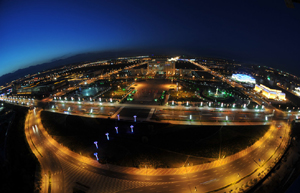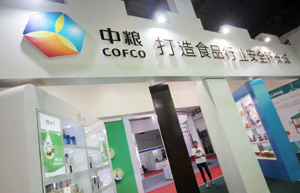BEIJING - Three decades ago, the east coast of Tianjin city was a patch of deserted land with a few scattered factories. Now it is home to more than 14,000 companies, of which 5,000 are foreign-funded.
"When the country first decided to set up a development zone here, people had doubts about how it would progress and how far it could go," said Xu Hongxing, director of the Tianjin Economic-Technological Development Area (TETD).
Development zones of various kinds have since mushroomed, affecting the economy in a way that far exceeds the expectations of the time. Development zones generated plenty of growth in the past, but now the question arises of whether the policy is still on track.
Changing economic landscape
"Economic zones have achieved a lot. They have played a crucial role in increasing trade, creating jobs, driving growth, and most importantly, connecting China with the rest of the world," said Chen Qining, president of the China headquarters of Singapore SCP Consultants Private Ltd, a city and regional planning consultancy.
The TETD, currently the most competitive economic zone, was one of the first approved in 1984, to expand reform and opening-up.
By July this year,there were 215 economic and technological zones, 115 high-tech zones, 13 tariff-free zones, 63 export processing zones, 15 border zones, and 57 zones of other types. In addition to these national zones, there were 1,170 provincial zones, and numerous economic zones at the prefecture or county level.
Wang Jici from the urban and environmental science college at Peking University, described how development zones were created when the country thirsted for capital, talent and technology. "They pushed opening up and technological innovation and have become a label for the China model," he said.
One fifth of gross foreign investment has gone into 210 national economic and technological development zones which contributed one eighth of GDP in 2013.
Corruption, pollution, inefficiency
"It is quite a complicated picture if you look at the development of economic zones. There were problems like low efficiency, over-exploitation of resources, environmental pollution, and corruption," Wang said.
Of 171 state-level economic zones in 2012, a large proportion reported less than 50 billion yuan ($8.14 billion) in GDP and no more than 20 billion yuan in exports, while the ratio of service industries for most zones was lower than 30 percent.
Preferential policies regarding investment, tax, trade, quotas, customs, labor regulations and land are there to attract investment. Under the control of governments, the zones have often become hotbeds of corruption. Between 2000 and 2014, more than 200 officials working in development zones in central Hubei province were removed from office.
Local officials obsessed with GDP are also inclined to tolerate high polluting industries. Residents near an industrial park in east Shandong Province have been filing complaints about serious pollution since 2009.
"Development zones were designed to accomplish different missions. Some apparently failed, but local governments still kept them because they want favorable policies," said Zhao Min, a professor from the architecture and urban planning college of Tongji University.
|
 |
 |
| Top 10 regions with highest reliant on property investment | Top 10 food and beverage companies in China |
